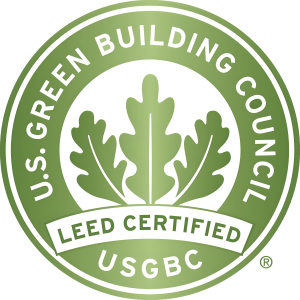Investors have realized that adding ESG criteria to their investment strategy is a must-have; however, it is never fully clear what the right path is. Adopting ESG criteria for your portfolio will potentially attract clients, but having a full, comprehensive sustainability strategy will certainly benefit all stakeholders in more impactful ways. In my experience greening real estate portfolios, these are four proven ways to enhance your ESG strategy by using LEED:
1. Let LEED serve as your road map for decarbonization.
Plenty of companies are pledging to reach net zero, but they can become overwhelmed by the challenge in practice. LEED serves as an amazing guide to achieving decarbonization, because it indicates what steps need to be taken with a systemic approach. One of the major misconceptions about decarbonization is that it only concerns energy, while some crucial aspects such as embodied carbon, transportation and waste are easily forgotten. LEED addresses the ESG question holistically, serving as a road map that will fulfill environmental and social criteria while also engaging in the adaptation and mitigation of climate risks. Embarking on the challenge is hard, but trusting in a well-laid plan like LEED will help us move toward accomplishing our science-based targets and net zero pledges.
2. Leverage the power of portfolio-level LEED.
Real estate portfolios need to overhaul their business models to adapt this new transitional economy. LEED volume programs assist in this transition by creating prototypes that dictate how new developments need to move forward, raise their standards and establish a new normal. Every portfolio is different, but we have found through our work that encouraging all the supply chain contractors and subcontractors to meet specific ESG criteria truly does help in making all strategies more efficient and effective. There is great comfort in seeing significant advancements happen with every project, without having to reinvent the wheel every single time.
3. Use LEED for existing buildings.
Having peace of mind when assessing how our assets are performing is invaluable, and there is no better way to start than with an audit. Surprise! That is the first step to achieving certification under LEED for Operations and Maintenance (LEED O+M). When covering audits in energy, water and waste, we really get to know where we stand in terms of how our assets are performing and where will investment serve better. Audits mark the difference because by identifying the key areas of improvement beforehand, real estate investors and tenants can anticipate where the savings generated by LEED O+M will be.
https://www.usgbc.org/articles/4-ways-enhance-your-esg-strategy-using-leed



